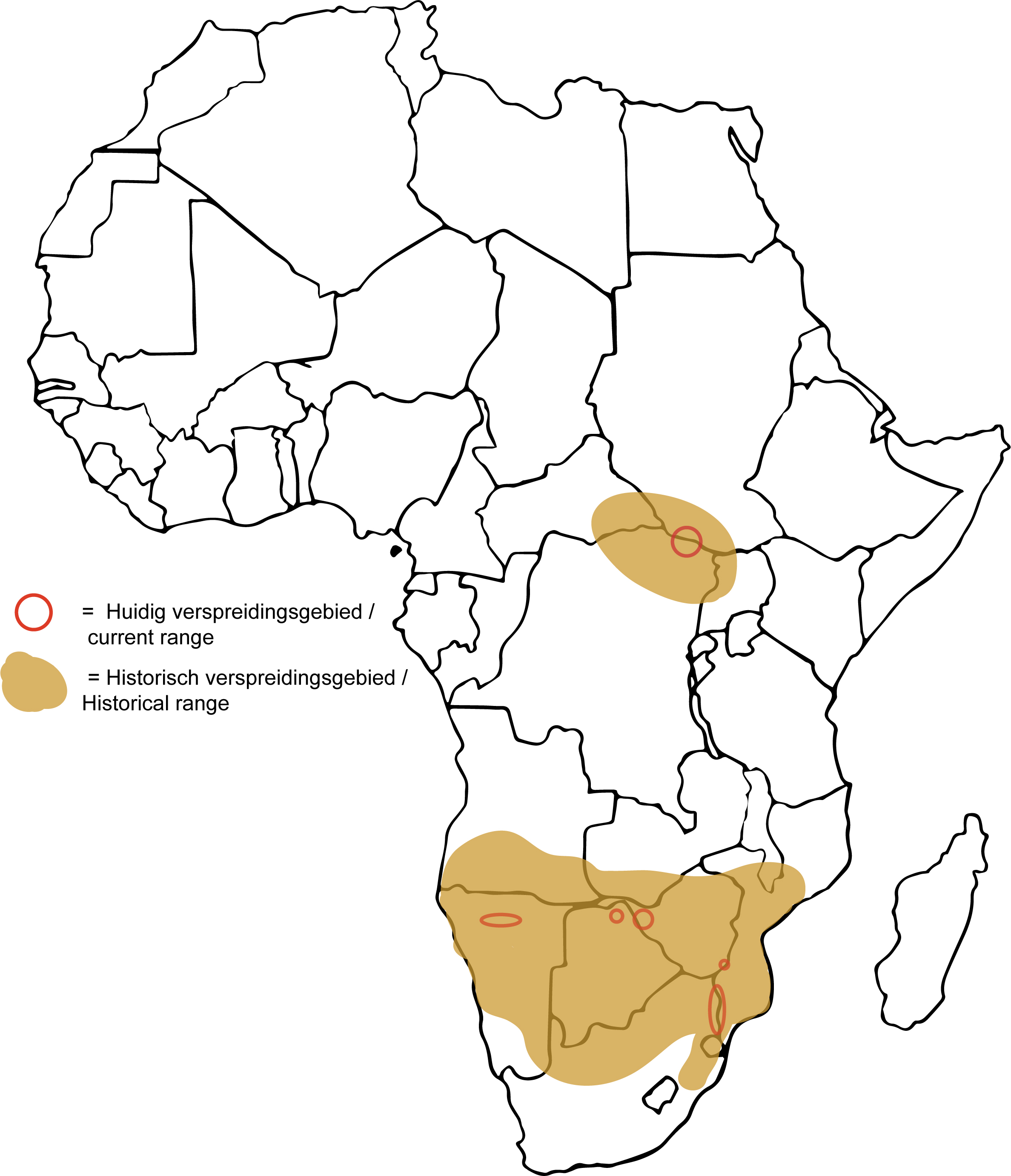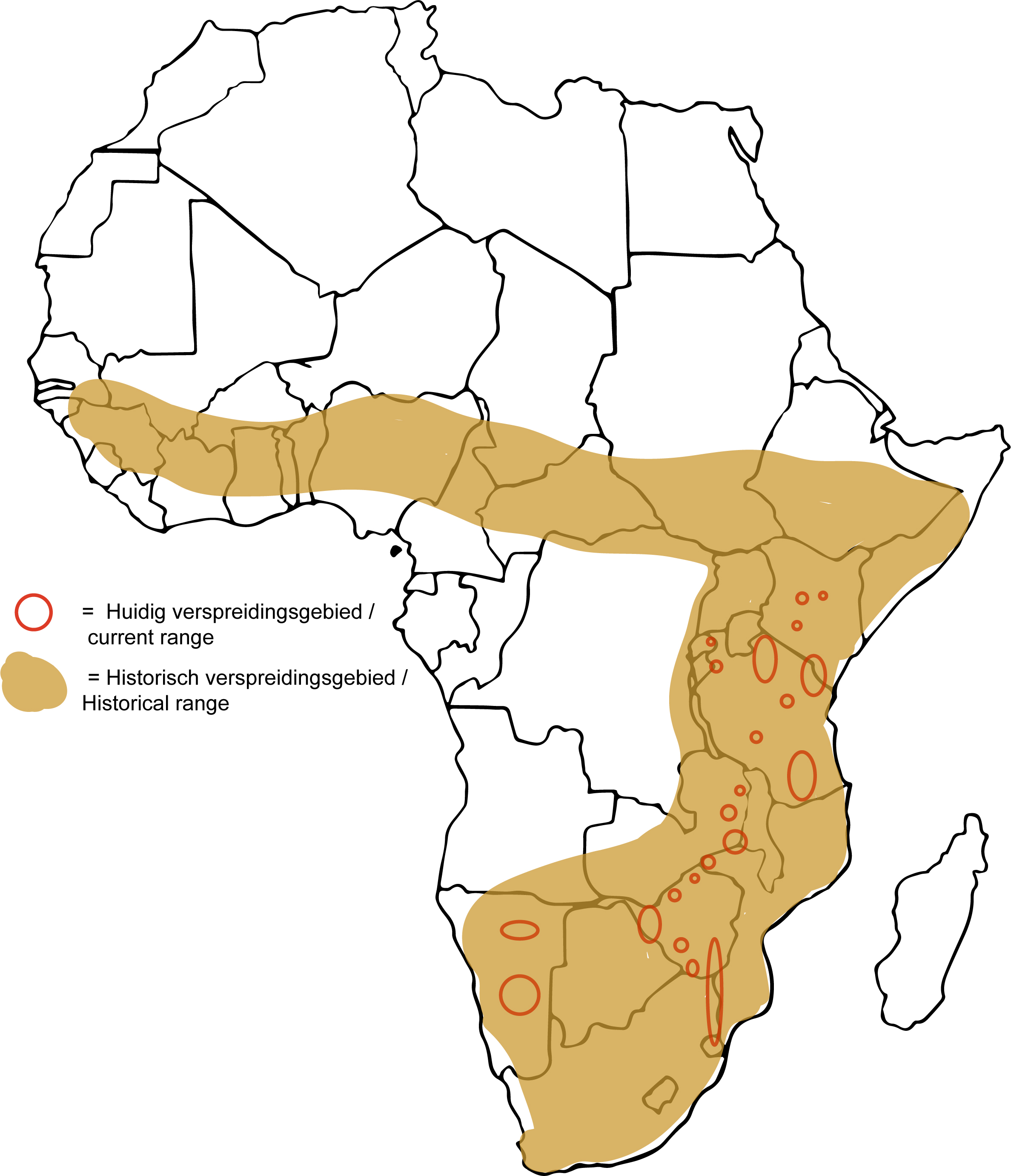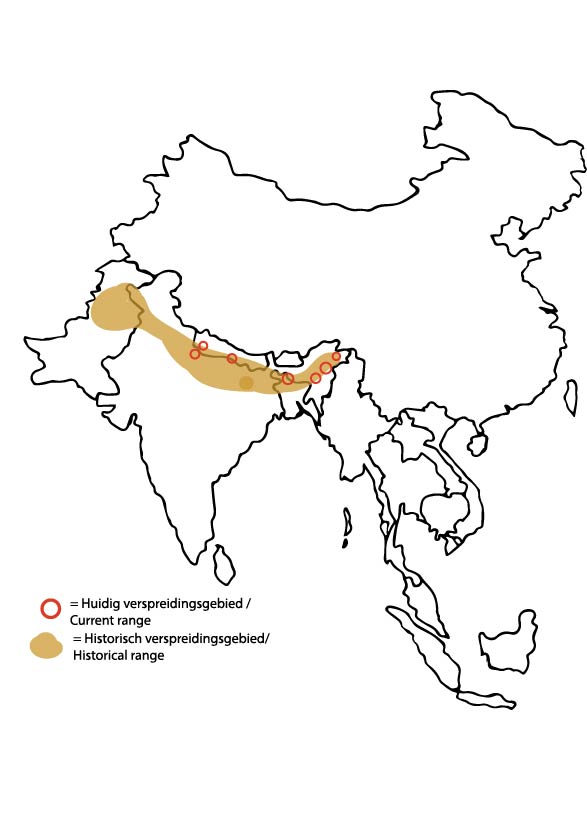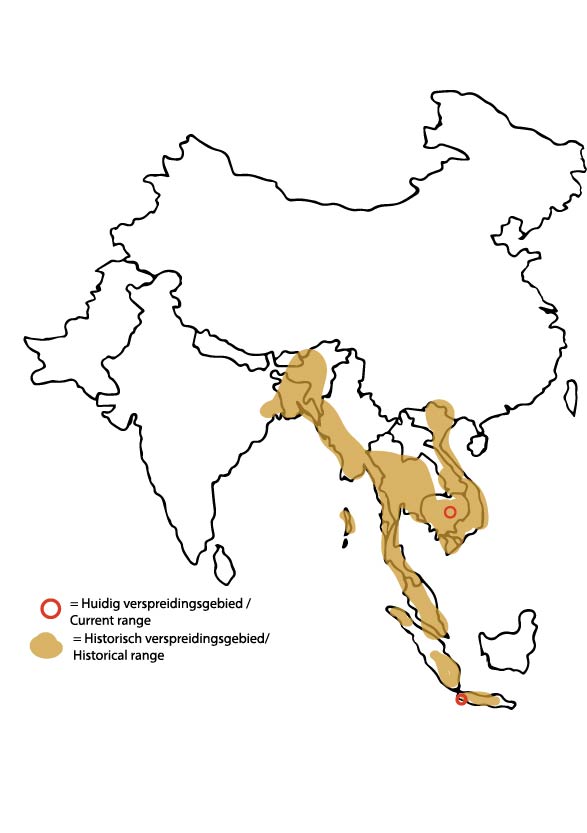
Population: 17.200 – 18.900 white rhinos. IUCN Red List Classification: Near Threatened. The southern white rhino is actually a success story when you talk about recovering an animal species. In the year 1900 there were about 50 to 100 white rhinos left and they were seriously threatened with extinction in South Africa. Due to the enormous commitment to the preservation of these animals, their numbers have grown to more than 17,000 animals. However, due to the poaching that made its mark in 2014 and causes around 1,000 dead animals a year, the rhino population will shrink quickly. The northern white rhino unfortunately has no success story. In the 70s and 80s, the population of northern white rhinos shrank considerably, from 500 animals to 15 animals. Then the poaching became less and the population recovered to around 32 animals. However, with the return of poaching, the population again fell sharply and they were no longer observed in the wild. There were only 8 northern white rhinos in captivity. The last living northern white rhino male Sudan died in March 2018. With now only two living females left and several IVF attempts that turn out to be unsuccessful, we can probably consider the northern white rhino extinct. The two females Fatu (19 years old) and her mother Najin (29 years old) returned from a Czech zoo in 2009 to a stay in Kenya.

Population: 5360 – 5630 black rhinos. IUCN Red List Classification: Critically Endangered In the year 1970 there were about 70,000 black rhinos, in 1995 the population was estimated at 2,400 animals. This is a decrease of 96% in 20 years. Due to the many protection measures, the black rhino population has risen to around 5500 animals. But also through reintegration programs, they have increased the geographic reach of the black rhino, returning to areas where they were previously seen. However, with still 3 poached rhinos a day, the future for the black rhino remains uncertain.

Population: arround 3500 animals. IUCN Red List Classification: Vulnerable. In the year 1900 there were only 200 animals left, and have since made a comeback to around 3500 animals thanks to joint conservation efforts in both India and Nepal. This seems to be successful, however, the population is vulnerable and can quickly fall due to poaching or the loss of habitat in the population. Poaching is still a major threat especially in the kaziranga National Park, which is an important area for the species. Habitat expansion is the main priority for the preservation of Indian rhino.

Population: arround 60 animals. IUCN Red List Classification: Critically endangered. With about 60 animals living in the Ujung Kulon National Park, the biggest threat to the species is the small population. The Javan rhino is extremely vulnerable to natural disasters and disease. A lot of effort is currently being put into expanding the habitat in Gunung Honje National Park. The Ujung Kulon National Park is located south of the Krakatoa volcano, which catastrophically destroyed the region in 1883. The son of Krakatoa called "anak Krakatau" is active a short distance from the original volcano. A new eruption of the volcano can devastate the small population of this species. In 2010, a rhino was chopped off with its horn in Vietnam for the last time.

Population: less than 80 animals. IUCN Red List Classification: Critically endangered. The Sumatran rhino is seriously threatened by the rapid decline of the population. Due to poaching, the numbers have fallen by 70% over the past 20 years. The only viable population now only lives in Indonesia, in Malaysia the species was declared extinct in 2015 in the wild. The Sumatran rhino only exists in areas where they are physically monitored by Rhino Protection Units. The greatest threat to the population is the loss of habitat, including the destruction of forests for palm oil and paper pulp and the ever-decreasing population that does not breed due to spread. Constant protection, protection of the habitat and the intensification of captive breeding are the best chance of survival of the species. In 2012, a sumatran rhinoceros was born in captivity in Indonesia's sumatran rhino sanctuary.